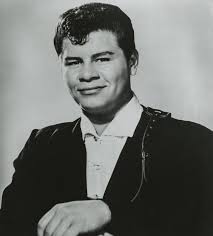
Today we begin by marking
You rightly ask: what can be “tragic” about a birth? Nothing in itself. So let us begin by celebrating the birth on December 31, 1943 – 75 years ago today – of the singer-songwriter, record producer, actor, activist, and humanitarian Henry John Deutschendorf, Jr. (I would tell you that Deutschendorf, Jr. got involved in the folk music scene in Los Angeles in his early twenties. It was there in L.A. that he met and befriended Randy Sparks (born 1933), the founder of the New Christy Minstrels. Sparks told the young man that the name “Deutschendorf” would never fit on a marquee, and suggested a name change. According to Deutschendorf, “I chose Denver because my heart longed to live in the mountains”.)
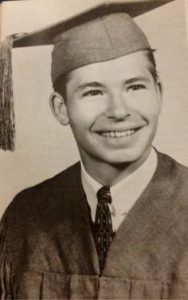
John Denver (as we will now refer to him) was born in Roswell, New Mexico, of Area 51 fame. As an Air Force brat, he grew up a nomad, rarely living more than a few years in one place before moving on once again. He took up the guitar at the age of 11; studied architecture at Texas Tech in Lubbock, Texas; dropped out, moved to L.A., changed his name and started his career.
And an impressive career it was. He recorded some 300 songs, of which 200 (or so) were of his own composition. All told, he sold over 33 million records worldwide and earned 12 gold albums (meaning sales of 500,000 units) and four platinum albums (meaning sales of one million units). His signature songs dealt with his relationships, his love of nature and dislike of city life, and the joy he found in his adopted home state of Colorado. Those songs include “Leaving on a Jet Plane”; “Annie’s Song”; “Thank God I’m a Country Boy”; “Take Me Home, Country Roads”; “Sunshine on My Shoulders”; and “Rocky Mountain High.”
Like his father, Air Force Captain Henry John “Dutch” Deutschendorf, John Denver was a pilot, with over 2,700 hours of flight experience. And while Denver was a painter, photographer, skier and golfer, he’d be the first to tell us that after music, his next greatest love was flying. He owned a Learjet, with which he flew himself to concerts. He owned a Christen Eagle aerobatic plane, two Cessna 210s and a collection of vintage biplanes.

In 1997, he purchased what was considered an experimental plane: a Rutan Long-EZ that had been built – by a hobbyist – from a kit. On October 12, 1997, the 53 year-old Denver was killed when that Rutan Long-EZ – registration number N555JD – crashed into Monterey Bay about 100 yards from the beach at Pacific Grove, California. He had been making touch-and-go landings from the nearby Monterey Peninsula Airport when the plane – which was estimated to be at an altitude of between 350 and 500 feet – dove nose first into the water. (According to the National Transportation Safety Board – NTSB – Denver accidentally pushed the right rudder pedal while he twisted to the left in an attempt to operate the plane’s fuel selector valve, which the previous owner had put behind the pilot’s seat.)
The plane disintegrated on impact, as did Denver’s body. Facial and dental recognition were impossible; in the end, he could only be identified via fingerprints. The cause of death was listed as “blunt force trauma.”
Yes: very tragic.
Here is the tragically related anniversary.

Rick Nelson
On December 31, 1985 – 33 years ago today – the 45 year-old singer, songwriter, and actor Eric Hilliard (nicknamed Rick) Nelson died when his fourteen-seat Douglas DC-3 crashed-landed in a cow pasture in DeKalb, Texas, northeast of Dallas. Also killed were Nelson’s girl friend, Helen Blair, and the other five members of his band. The two pilots escaped through the cockpit windows, although one of them – Ken Ferguson – was severely burned.
I grew up watching The Adventures of Ozzie and Harriet TV show, which featured the real-life Nelson family: father Ozzie, his wife Harriet; the older son David and the cute youngster Ricky. Ricky (later just Rick) went on to a career as a teen heartthrob in the late 1950s and 1960s. Over the course of his foreshortened career he had scored over thirty U.S. charted Top 40 singles.
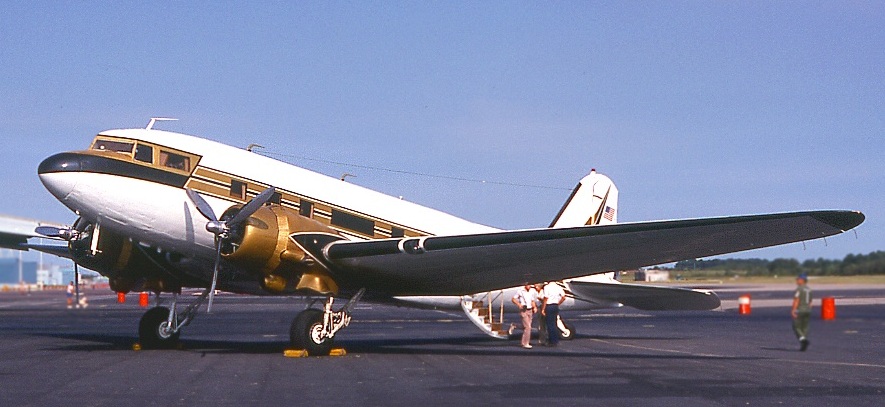
Ironically, Rick Nelson was morbidly afraid of flying. But he also refused to travel on tour by bus. So he swallowed his fear and in May of 1985 he bought the DC-3 in which he would die for $118,000. It had been built in 1944 during World War II. Following its service in the U.S. military it was converted to a civil DC-3C in 1959. Along the way the plane had been owned by the DuPont family and the singer Jerry Lee Lewis.
The plane had a long history of mechanical problems, including problems with its cabin heater. On December 31, 1985, it was en route from Guntersville, Alabama to Dallas when the pilot reported a fire in the cabin. According to witnesses, the plane descended in a left turn in an attempt to land on a farm field:
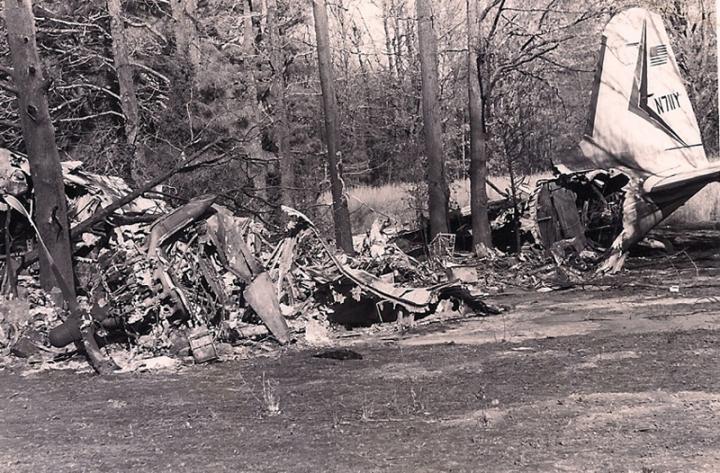
“It was trailing smoke and small pieces of metal fell off which started several small fires. The DC-3 struck two power wires suspended about 30 feet above the ground, a utility pole and several trees. Already on fire, the airplane was completely destroyed.”
The NTSB investigation found that the fire in the passenger cabin had almost certainly started in the on-board cabin heater. But that didn’t stop the tabloids from claiming that the fire had been caused by the passengers freebasing cocaine. It was an entirely false claim, denied vehemently by the NTSB, and yet it’s still everywhere to be found. Another example of once on the Internet, always on the Internet.
Yes indeed, Rick Nelson should have taken a bus.
In researching this post, I was stunned by how many high-end musical talents have died in plane crashes. In the seasonal spirit of sharing, here’s a bunch of other folks who should’ve taken a bus.
Glenn Miller (1904-1944)

In Miller’s case, he should have taken a boat.
As a trombone-playing bandleader, Miller was one of the most popular musicians of the 1930s and 1940s. In 1942, the 38 year-old Miller joined the United States Army as a “specialist.” Transferred to the Army Air Force (the predecessor of the U.S. Air Force), Miller eventually formed his 50-piece Army Air Force Band, which was recorded and broadcast worldwide.
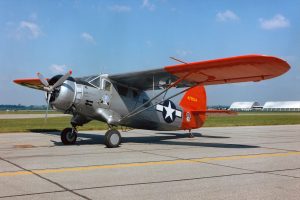
On December 15, 1944, Miller was slated to fly from England to Paris in preparation for moving his band to Paris. It was foggy and freezing cold; Miller should never have flown that evening. But he insisted on going, and so his single engine UC-64 Norseman left the Royal Air Force field at Twinwood Farm that evening.
Neither Miller nor the plane were ever heard from again.
No one knows what happened. At the same
“The Day the Music Died”
“The day the music died”, February 3, 1959: the deaths of Buddy Holly (born 1936), Ritchie Valens (born 1941), and J.P. “The Big Bopper” Richardson (born 1930).
These three musicians were all part of a larger tour called the “Winter Dance Party”. Buddy Holly, sick and tired of the slow, freezing, and uncomfortable tour buses in which he had been traveling, chartered a single-engine Beechcraft Bonanza to take him from the Mason City (Iowa) Municipal Airport to Moorhead, Minnesota. At $36.00 per passenger, he was joined by Richie Valens and J.P. Richardson.
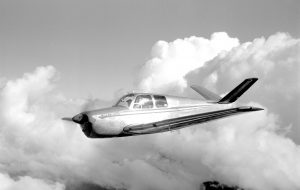
Talk about another flight that should never have taken off. The night of February 3, 1959 was very cold, visibility was limited, and the weather conditions were deteriorating. Nevertheless, the 21 year-old pilot Roger Peterson took off. The plane flew for all of six miles before Peterson, suffering from spatial disorientation (in this case, descending when he thought he was climbing) crashed the plane, killing everyone on board.
“The right wing tip struck the ground first, sending the aircraft cartwheeling across the frozen field for 540 feet, before coming to rest against a fence. The bodies of Holly and Valens had been ejected from the torn fuselage and lay near the plane’s wreckage. Richardson’s body had been thrown over the fence and into a neighboring cornfield, while Peterson’s body was entangled in the wreckage.”
A grim post-script: when Buddy Holly found out that his band-mate Waylon Jennings (1937-2002) had given his seat to “Big Bopper” Richardson, he teased Jennings: “Well, I hope your
Patsy Cline (1932-1963)
Yet another ill-advised flight in bad weather on a small plane took the life of the country music and pop singer Patsy Cline (born Virginia Patterson Hensley) on March 5, 1963. She was on her way home to Nashville from a benefit concert in Kansas City when the Piper PA-24 Comanche being piloted by her manager Randy Hughes crashed in the woods near Camden, Tennessee.
The country singers
Sadly, the list goes on…
Sadly, the list goes on. All eight members of Reba McEntire’s band died on the night of March 16, 1991, when the Hawker Siddeley in which they were flying crashed into a mountain after taking off from Brown Field Municipal Airport in San Diego.

Otis Reading (1941-1967) and plane 
Ronnie Van Zant (1948-1977) 
Jim Croce (1943-1973) 
Randy Rhoads (1956-1982)
Otis Reading (1941-1967) died on December 10,
Jim Croce (1943-1973) died on September 20,
On October 21,

Here’s a solid nomination for a “Darwin Award”. On March 19, 1982 the lead guitarist in Ozzie Osbourne’s band, Randall “Randy” Rhoads (1956-1982) was killed along with two others when their Beechcraft Bonanza flew too low while “buzzing” the band’s tour bus in Leesburg, Florida. The band had made a pit stop at the palatial home of a millionaire named Jerry Calhoun. Calhoun had his own landing strip, and without permission, the band’s bus driver (and private pilot) – Andrew Aycock – decided to take a little joy-flight. With Randy Rhoads and the band’s makeup artist Rachel Youngblood aboard, Aycock began buzzing the parked tour bus. On the fourth pass, one of the plane’s wings clipped the bus, and what happened next reads, ghastly though it may be, like a Road Runner cartoon. That initial impact of the plane on the bus caused Rhoads’ and Rachel Youngblood’s heads to crash through and out of the plane’s windshield. Thus accessorized, the plane spiraled out of control; it severed the top of a pine tree and finally crashed into Calhoun’s mansion, where it burst into flames and completely gutted the house.
While Rhoads was burned beyond recognition he was identifiable by his bling (his personal jewelry). According to Sharon Osborne, “They were all in bits, it was just body parts everywhere.”
Actress and R&B singer Aaliyah (1979-2001) was killed in the Bahamas along with eight others on August 25,
And helicopters? Let’s not forget helicopters.
On August 27, 1990, the blues guitarist Stevie Ray Vaughan (1954-1990) died when his Bell 206B helicopter crashed in foggy conditions into a hill in East Troy, Wisconsin, after departing from a concert.
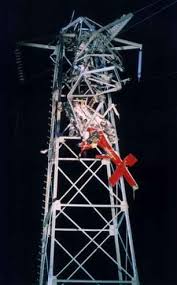
And finally. On October 25, 1991, the concert promoter and entrepreneur Bill Graham (1931-1991; his birth name was Wulf Wolodia Grajonca was killed when his Bell 206B helicopter – once again, inadvisably flying in bad weather – impaled itself atop a 223-foot-high high-voltage transmission tower outside Vallejo California, about 20 miles north from where I am writing this. The helicopter – which melted onto the tower – exploded on impact, killing everyone on board.
Next time, please, all of you, take the bus.
For lots more of my blogs, videos, reviews, and the like, I would invite you to subscribe to my Patreon page at Patreon.com/RobertGreenbergMusic.
Listen on the Music History Monday Podcast
Podcast: Play in new window
Subscribe: Apple Podcasts | Spotify | Pandora | iHeartRadio | RSS | More


